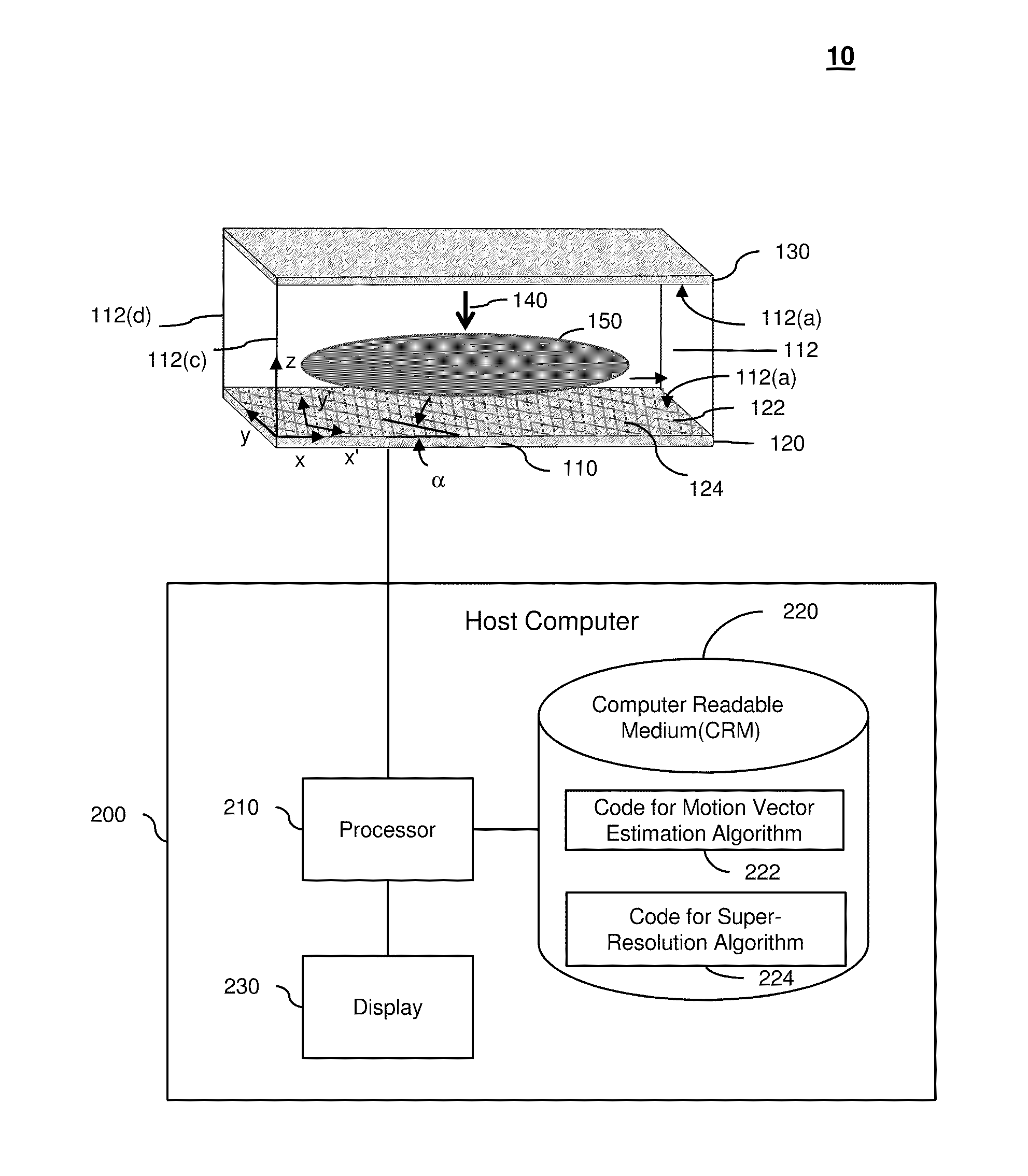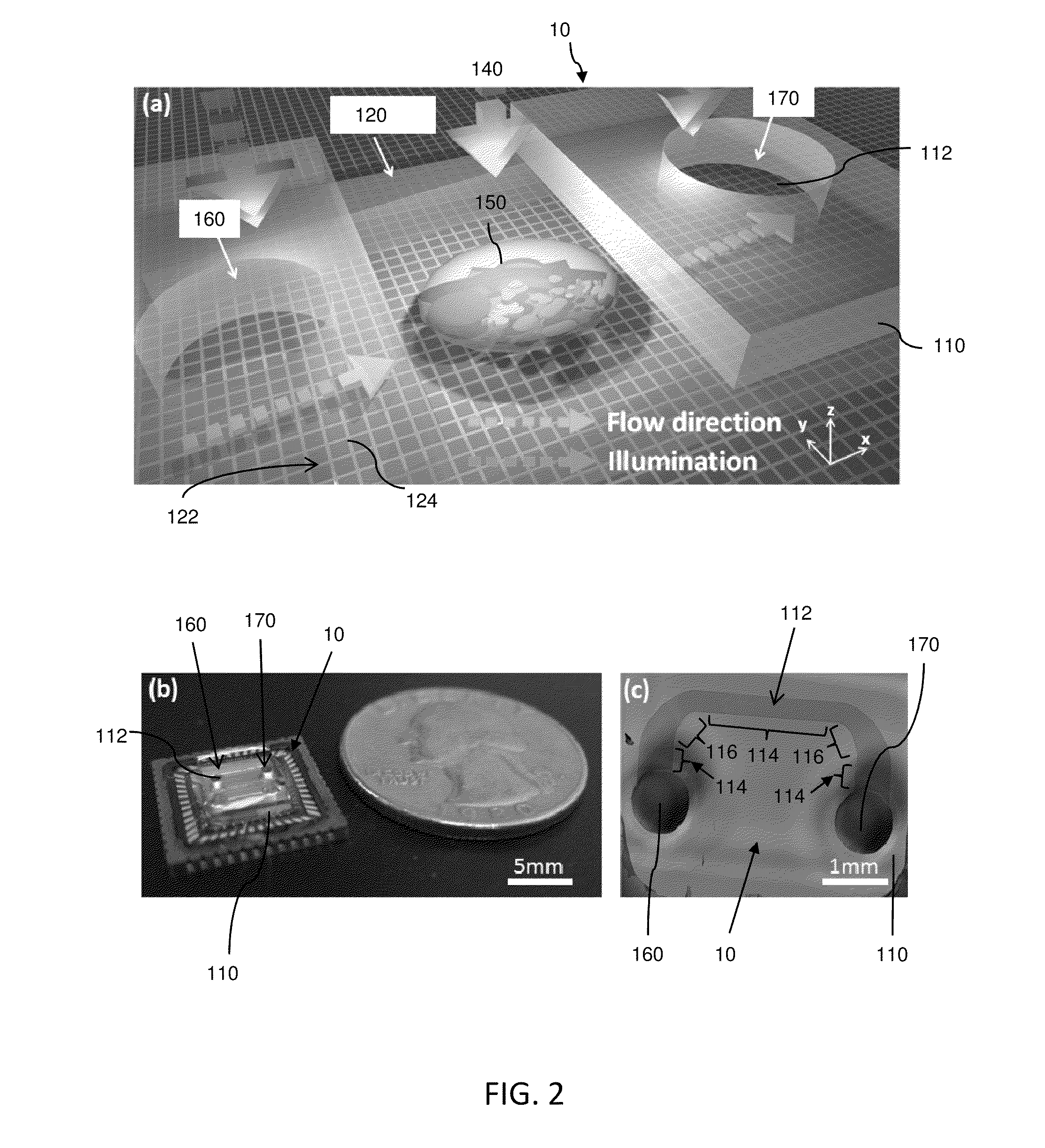Super resolution optofluidic microscopes for 2d and 3D imaging
a technology of optofluidic microscope and optical microscope, which is applied in the field of super resolution optofluidic microscope, can solve the problems of limited image resolution in many conventional ofms, bulky optics of conventional optical microscopes, and high cost and miniaturization difficulties, and achieve high resolution and resolution
- Summary
- Abstract
- Description
- Claims
- Application Information
AI Technical Summary
Benefits of technology
Problems solved by technology
Method used
Image
Examples
Embodiment Construction
[0034]Embodiments of the present invention will be described below with reference to the accompanying drawings. Some embodiments include a SROFM have a body (e.g., microfluidic chip) defining a fluid channel and a light detector with a two-dimensional array of light detecting elements (e.g., CMOS sensor array). The light detector samples light data at a subpixel sampling rate to capture a sequence of subpixel-shifted snapshot projections (frames) as the object moves through the fluid channel. The processor determines the motion vector of the object. Then, the processor uses a super resolution algorithm (SR algorithm) to reconstruct a super-resolution (SR) two-dimensional image of an object from the sequence of subpixel-shifted frames and the motion vector. The processor can also determine a SR, three-dimensional image of the object by combining multiple reconstructed HR images from different incidence angles (views) using computed tomography.
[0035]The subpixel shifts of the object b...
PUM
 Login to View More
Login to View More Abstract
Description
Claims
Application Information
 Login to View More
Login to View More - R&D
- Intellectual Property
- Life Sciences
- Materials
- Tech Scout
- Unparalleled Data Quality
- Higher Quality Content
- 60% Fewer Hallucinations
Browse by: Latest US Patents, China's latest patents, Technical Efficacy Thesaurus, Application Domain, Technology Topic, Popular Technical Reports.
© 2025 PatSnap. All rights reserved.Legal|Privacy policy|Modern Slavery Act Transparency Statement|Sitemap|About US| Contact US: help@patsnap.com



